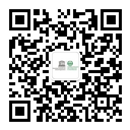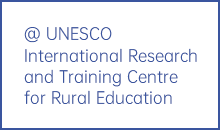UNESCO stated that, as of 16 April, school closures in many countries worldwide during the spread of COVID-19 have resulted in 1,575,270,054 learners being excluded from the normal learning process. Lots of countries have initiated several strategies to contain this virus, including school closures. Measures for preventing the expansion of COVID-19 in university campuses are adopted, and curricula are delivered through virtual campuses, the media or other digital environments.
For university teachers, they have to stay at home and deliver lectures via the Internet, which may cause some challenges for some teachers, especially for those who are not familiar with the needs of modern education and the methods of integrating technology into education. In fact, in some places, many universities are still adopting the old-fashioned model of delivering lectures for passive audiences, thus failing to harness to the educational possibilities affordances afforded by emerging technologies. In this critical moment, it is an excellent opportunity for rethinking teaching and learning, and for leveraging technology to transform the old-fashioned models for preparing students for the future.
To facilitate university teachers for conducting flexible instruction to ensure the quality of learning in this critical moment, the guidance has identified some academic terms, guidelines, tips, and stories for teachers, namely: (a) Making flexible lesson plans and learning activities. It is crucial to utilize multiple strategies to design learning activities and implement the design by considering the characteristics of online or blended learning environments. (b) Delivering instruction in diverse technology-enhanced ways. Webcasts in education, learning with MOOCs, flipped instruction, group learning, and joint online course will be elaborated in some detail. (c) Adopting abundant digital resources and appropriate tools for learning. The choice of the most suitable digital learning tools should be based on considerations of licensing, accuracy, interactivity,ease of adaptability, and cultural relevance and sensibility. (d) Designing learning activities to promote interaction, enhance engagement and improve motivation. How webinar, online discussion, project-based learning, online debate, brainstorming, experiential learning with virtual space, and gamifying of learning, can be used and designed for promoting interaction, will be discussed. (e) Evaluating the learning process and outcome in appropriate ways. We will discuss the possibilities of online examination, rubrics, self-checklist, learning contract, e-portfolio, learning analytics, and AI-assisted assessment, for enabling or supporting assessment.
Finally, five implications are discussed for promoting higher education in a sustainable way for a long term. (a)Rethinking higher education. (b) Changing the roles of educators. (c) Integrating formal and informal learning. (d) Bridging the achievement gap of students. (e) Transforming pedagogy through new technology.













